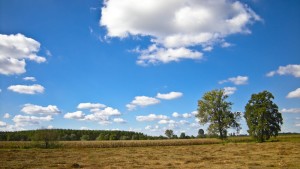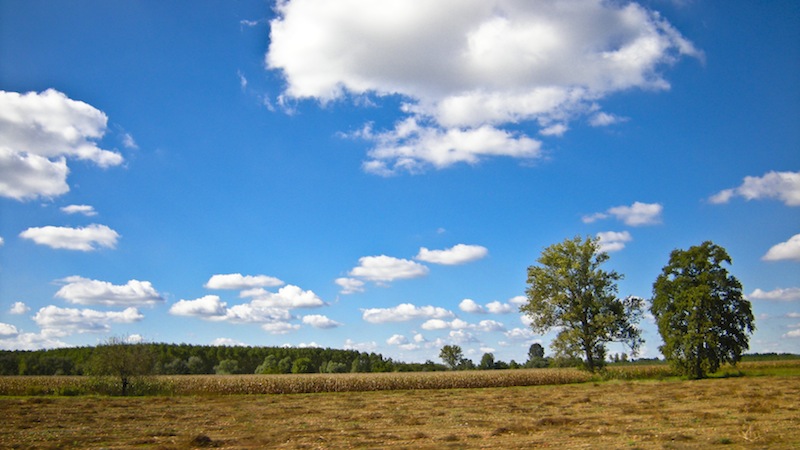 Prices paid for Illinois farmland as well as rates being paid to rent the same ground have continued their downward trend for a second year according to a state-wide survey conducted by the Illinois Society of Professional Farm Managers and Rural Appraisers. The results were released today at the annual Illinois Farmland Values Conference held here.
Prices paid for Illinois farmland as well as rates being paid to rent the same ground have continued their downward trend for a second year according to a state-wide survey conducted by the Illinois Society of Professional Farm Managers and Rural Appraisers. The results were released today at the annual Illinois Farmland Values Conference held here.
Download our Report Summary.
Download Farm Real Estate Investments: Headwinds, Tailwinds and Developing Issues, by Bruce J. Sherrick, Ph.D.
Prices paid for land rated Excellent and Good both dropped by eight percentage points during 2015 while Average land dropped 9 percent last year according to the study results. Be definition Excellent land typically yields over 190 bushels of corn per acre, Good land yields between 170 – 190 bushels and Average yields between 150 — 170 bushels per acre. The study is a result of a state-wide survey that was conducted in January among Illinois Society members and others within the industry.
In releasing the survey results it was noted that values regressed but remained ‘relatively strong’ for Excellent land and there are pockets of strength that still exist. The presentation was made by David Klein, AFM Soy Capital Ag Services, Bloomington, Il, overall co-chair of the annual Land Values Project which is conducted by ISPFMRA. His co-chair is Dale Aupperle, AFM, ARA, Heartland Ag Group, Forsyth, IL. Klein went on to explain that buyers are still willing to pay a premium for high quality soil. He noted that average prices paid for Excellent quality land in January 2015 were at $12,600 per acre. This compared to $11,600 at the end of the year.
“Buyers were cautious, looking for deals for land ranked as Good quality,” Klein continued. “We noticed there were some longer listing periods for some of this land during the year.” Opening year prices averaged $10,600 and closed out December at $9,700.
“Buyers of Average land were very selective,” Klein said. “There were more noticeable declines in prices for this type of land, which requires higher maintenance and management.” He also noted that there were more ‘No Sales’ at auctions for this type of land compared to the other classes. The statewide average for this type of soil was $6,215 per acre.
Lower Farm Income to Blame
In all cases, reduced commodity prices were blamed for the reductions in land prices as well as rent rates across the state. “All of agriculture is watching corn and soybean prices to see which direction our earnings will take in 2016,” Klein explained. He referred to the overall earnings outlook as ‘diminishing,’ and added that crop insurance is an important income safety net.
Aupperle also cited lower commodity prices for drop in Return on Investment (ROI). “Our traditional 3.5 percent to 4.0 percent ROI has been diminished as well. Those returns are now in the 2.5 percent range.” He added, however, that “investors still find this acceptable in an unstable general economy.”
Cash Rent Levels Will Continue Decline
An analysis of cash rent levels was done by Gary Schnitkey, Ph.D., University of Illinois Department of Ag and Consumer Economics. “Survey results indicate that income levels in 2015 from owning farmland were below 2014 levels, continuing a string of declining return years that began in 2013. Cash rents in 2016 decreased from 2015 levels and, if trends continue, we’ll see lower cash rents again in 2017. Respondents expect very little farmland to change hands because the current farm operator is unwilling to pay the desired cash rent. They also feel they could find other farm operators to replace current operators if the need arises.”
“For Excellent quality farmland, traditional crop shares had average income of $204 per acre, cash rent had $263 per acre, and custom farming had $259 per acre. Across all land qualities, returns from share rent leases were lower than cash rent leases. Custom farming had returns comparable to cash rents.
In those same categories, incomes in 2015 decreased from 2014 with net drops of $46 per acre of Excellent land for traditional crop share, negative $37 for cash rent and negative $58 for custom farming.
Projected rent rates for will vary from a high of $350 per acre to $275 per acre for Excellent land; $300 to $250 for Good land; $260 to $191 for Average land, and $208 – $150 for Fair land. In retrospect, mid-range rent rates for 2007 were $183 for Excellent land, $164 for Good land, and $144 for Average soil. Values peaked in 2013 at $396 for Excellent land, $339 for Good land, and $285 for Average land.
Looking to the future the survey respondents expect 2017 cash rents to be lower than in 2016. Forty one percent expect decreases of between $25 and $50 and 50 percent expect the decrease to range between $5 and $25 per acre. None are expecting rents to increase.
A Challenging Year
According to Klein, “2015 provided us a challenging year. Record harvests of our main crops the past two years led to downward pressure on prices. Farm income and farmland values are adjusting, but there are signs of optimism.
“Interest rates and farm debt-to-asset ratios remain historically low as farmers manage their balance sheets. Crop input costs continue to come down. Domestic beef, pork and poultry production are all projected to increase in 2016 – pork and poultry to record levels. Competition for land remains strong. With continued low interest rates and volatile equity markets, productive farmland continues to be a safe haven for both farmers and investors.”
Summary Observations
• Sellers of Farmland – Estates accounted for 54 percent of the volume of Illinois farmland sold. Will there begin to be a higher percentage of other categories in 2016?
• Buyers of Farmland – Farmers accounted for 60 percent of the purchase made in 2015. Most were reinvesting into their farm business – where they know the value as well as anyone! When farmers stepped aside, investors were looking for opportunities in an uncertain financial market.
• Methods of Sale – Most farms were sold by private treaty in 2015, a sign more negotiating was occurring. Thirty-five percent of the transactions were at auction. In an uncertain market, auctions can bring decision-makers together in a hurry! As a result, some firecrackers continued to be let off and more “no sales” occurred at auction.
• Cash Rents – Generally speaking, our farm incomes were lower in 2015 and are projected to be even lower in 2016. This reduced crop share leases as compared to cash rents. Cash rents for 2015 declined by roughly $25 per acre to a $350 average on Excellent quality farmland. Most ISPFMRA members expect 2016 cash rents on Excellent quality soil farms to be another $25 per acre lower than the current year at $325 or less.
• Belt tightening can be heard throughout the countryside. Lower corn and soybean prices will reduce net farm income by over 20 percent in 2016. Spring crop insurance prices will be the lowest since 2006, and input costs today are nearly double what they were then.
• Livestock Industry – Beef, swine and poultry production numbers are all planned to grow in 2016, but livestock farmers have started to feel their own pinch of lower prices. These land buyers understand the value of “the farm next door” and continue to compete vigorously for additional farmland near their current facilities throughout the state.
• Auction Sales – Auction sales continue to show pockets of both strength and relative softness. Class A farms selling at Mt. Carroll for $14,400, Brimfield for $13,500, and Mendota for $12,000 early in 2016 show strength still exists in areas, but an increasing number of “No Sales” in November/December 2015 also shows that every farm auction isn’t bringing expectations every time. An auction takes two motivated buyers!
• Tract Sizes – Tract sizes were generally larger in 2015 than 2014. The largest tracts were often purchased at a premium by institutional or absentee investor landowners seeking to place significant holdings into farmland. Auctions on large tracts were met with mixed results.
• Transitional/Development Land – Fewer tracts of land were sold for development than in past years in downstate Illinois. More activity is picking up in the collar counties, which has led to a little 1031 exchange money again
• Institutional Money – Larger tracts of land have drawn interest again from institutional investors, pension funds and others. There may be a premium right now for bigger tracts.
• Drainage pays! – 2015 taught many landowners across the state the value of good drainage on our productive cropland. The ability to effectively move excess water and keep crops healthy resulted in wide productivity ranges and better returns on farms improved with tile drainage.
• 1031 Tax Free Exchange Influence – These continue to be used by landowners making even money trades to create larger tracts of land where they can be farmed more efficiently, as well as a slow increase in developmental exchange money out of the St. Louis, Chicago and Indianapolis markets.
• Farmland Availability – Farmland supply to the market remained fairly tight throughout 2015 until year end when the seasonal increase occurred in November and December. Most of our membership expects 2016 to see a larger supply come to the market this year.
-30-
Note to Media:
For more detailed, overall or region-by-region information, contact any of the following:
David Klein, AFM, ALC
Soy Capital Ag Services
Phone: (309) 665-0961
Dale Aupperle, AFM, ARA
Heartland Ag Group, Ltd.
Phone: (217) 876-7700
Gary Schnitkey, PhD
University of Illinois
Phone: (217) 244-9595
Region 1
Douglas Deininger, ALC
Land Pro LLC
Plainfield, IL
Phone: (815) 439 9245
Region 2
David Dinderman
1st Farm Credit Services
Freeport, IL
Phone: (815) 235-3171
Todd Slock
1st Farm Credit Services
Rock Falls, IL
Phone: (815) 587-4988
Region 3
Herbert Meyer, ARA
1st Farm Credit Services
Edwards, IL
Phone (309) 360-5553
Region 4
Ross Perkins
Soy Capital Ag Services
Bloomington, IL
Phone: (309) 665-0059
Region 5
Mac Boyd, ARA
Farmers National Co.
Arcola, IL
Phone: (217) 268-4434
Region 6
Bruce M. Huber, AFM, ARA
First Illinois Ag Group
Decatur, IL
Phone: (217) 521-3537
Region 7
Thomas L. Toohill, AFM
Soy Capital Ag Services
Springfield, IL
Phone: (217) 547-2885
Region 8
Dale Kellermann, AFM
First Illinois Ag Group
O’Fallon, IL
Phone (618) 622-9490
Region 9
David M. Ragan
Farm Credit Illinois
1506 E. Fayette Avenue
Effingham, IL
Phone: (217) 857-6450
Region 10
Phil Eberle
Southern Illinois University

